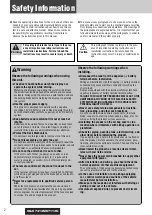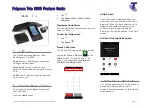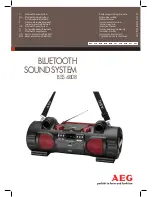
<5. Wiring>
5-4
IM 01W03D02-01EN
IMPORTANT
When using a cable gland, apply a water
proofing sealant to the threads of the cable
gland. (It is recommended that you use non-
hardening sealant made of silicon resin for
waterproofing.)
Input Terminal
Input terminal is a spring terminal. When using a
solid conductor cable or with sleeve, connect the
cable to the input terminal. When using a standard
conductor, push down the top of a cable inlet and
insert the cable. To unplug the cable, push down the
top of a cable inlet and unplug the cable.
F0506.ai
Figure 5.6
Connecting to the Input Terminal
Wiring to Input Terminals: 1 (with sleeve)
The sleeve can prevent cable leads from untwist
when you connect the cable. Select a sleeve to
match the cable size. If the length of cable leads
does not match the length of sleeve (l
2
), strip the
cable to the correct length. Strip the cable for a
length so that the core wire slightly extends from the
metal tube of the sleeve. If this causes the length
of the metal tube of the sleeve to be slightly shorter
than the stripping length, this is no problem.
The wiring cables and applicable sleeves are listed
in the table below. Use the same manufacturer for
sleeves and tools.
Example of tool: Phoenix Contact’s CRIMPFOX6
For details on sleeves and crimp tools, contact to
Phoenix Contact Inc.
l
1
l
2
d
1
s
1
s
2
d
2
F0507.ai
Figure 5.7
Sleeve Length
Wiring to Input Terminals: 2 (without sleeve)
• When using a solid conductor cable, strip
the insulated cover and connect it. Strip the
insulated cover for 8mm.
• When using a stranded conductor, strip the
insulated cover and twist and connect it. Strip
the insulated cover for 8mm. Never solder the
stranded conductor when connecting cables.
Be careful not to cause the loosely stranded
conductor to come in contact with adjacent
terminals or others. Insert the cable leads into
the terminal block securely.
Cable
Core
Length of exposed wire
F0508.ai
Figure 5.8
Length of Exposed Wire
















































